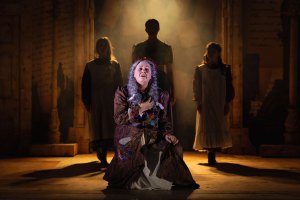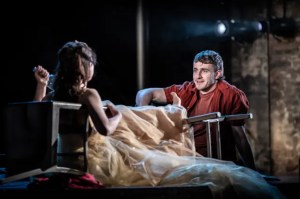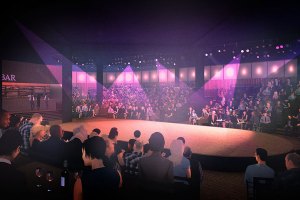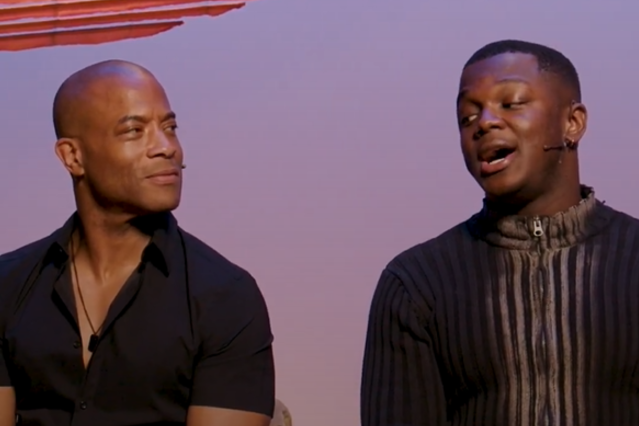Matt Trueman: London theatres have become hang-outs
Matt Trueman on the rise of the trendy theatre bar

© slimmer_jimmer/Flickr
Back in the late Eighties, the Victoria and Albert museum ran an iconic advertising campaign. "An ace caff with quite a nice museum attached," its posters boasted. There were six in total. They spoke of jaded old mirrors and tasty currant buns, egg sandwiches with side orders of priceless objet d’art. It was ironic. It was irreverent. Of course, it was. It was Saatchi and Saatchi.
This year, the Bush is undergoing a refurb – the second phase of getting its new home at the old Shepherd’s Bush Library into shape. On Tuesday, architect Steve Tompkins talked through the changes – a new studio theatre, decent dressing rooms, a lift for accessibility and, crucially, a new glass corridor to the side of the building. That will, it’s hoped, open the theatre up, facing down the Uxbridge road and letting people see inside. It will expand the Bush’s ace caff, as well as provide a route through to its ace beer garden. This is architecture as invitation.
London theatres have become hang-outs. In the last 20 years or so, most have sprung an ace caff or a restaurant – some of which have been big successes. The Young Vic has one of the buzziest bars on the Cut – its no-frills and neon aesthetic pulls a young crowd and its roof terrace makes it a summer hotspot. At the National, the big hit of the recent refurb has been the Understudy, the compact craft beer bar facing the South Bank. Every night, it’s full – mostly of young professionals – and, in the summer, its terrace is jam-packed. Outside London, too – in Manchester, HOME‘s restaurant pulls office workers from the surrounding business park; Liverpool Everyman‘s swish bistro replaced its run-down old café.
Prosecco and wild hibiscus cocktails won’t bring a low-income, working class audience to your building
An old Trip Advisor review did the rounds on social media the other week. In it, a tourist moans about the public spaces in the Royal Festival Hall. "It was a warm evening in March, so there were crowds of people everywhere," it starts, before complaining about the number of people using the facilities, the free-wifi – even laughing, of all things. That’s brilliant, right? A public building being used by the public.
The thinking behind all this is that if you can get people into a theatre building, they might go on to engage with the art. It’s a boozier version of that egg sandwich and an artefact ad. It makes sense. Once you’ve crossed the threshold of a theatre, going into the auditorium itself isn’t such a big step. If the Bush can pull people off the Uxbridge Road for a sit down, it’s just possible they might pick a playtext off the shelves or flick through a season brochure while there.
In any case, cash spent behind the bar feeds back into the art. The National anticipates a £1.7 million profit from its trading operations this year, now it’s fully functional. Having relied on its commercial transfers to offset funding cuts, the organisation is now turning to its in-house facilities, which are, theoretically, more reliable income streams. The same is true elsewhere.
However, there’s a fundamental tension here: that of access against income. It’s a question of who these facilities are being aimed at. All the flat whites, craft beers and, ahem, Prosecco and wild hibiscus cocktails in the world won’t bring a low-income, working class audience into your building. They may tip your balance sheet into the black, but they only entrench the sense that these buildings are bastions of middle-class tastes. The same, in all truth, goes for the architecture of these spaces.
In all this, I keep thinking back to the Shunt Vaults – still a great loss to London. It was a truly mixed crowd, one in which bankers and artists and clubbers, thirtysomethings and twentysomethings and teenagers would come together for a night out. It was a fiver to get in, and everyone drank tinnies from a makeshift bar. You were there for a party, but around it, there was art – theatre tucked in damp corners, installations hanging from the ceiling, live artists doing whatnot on tables. Every so often, the music would stop for some sort of focal-point performance – Nigel Barrett in a body stocking or somesuch – before the night resumed. It was a place people wanted to come, a truly democratic space, but one that put art – and quite challenging art at that – in full view.
Where else did they give you cutting-edge live art with every can of Red Stripe?












